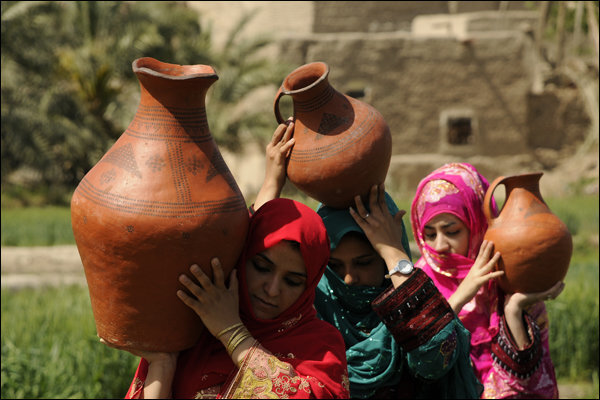Discover an original style of pottery in Kalpurgan

TEHRAN – Archaeological surveys suggest the village of Kalpurgan in southeast Iran has long been a hub for potters.
The potteries of the village, which is located in Sistan-Baluchestan province, are very similar to the discoveries of archeological excavations that trace back to the 3rd millennium BC, according to Visit Iran.
The unique characteristic of potteries in this region is that the technique of their production has not changed since thousands of years ago and the artist potters who are mostly tasteful women of this region, make the potteries with no use of machinery and only by their hands.
The motifs of these potteries also have roots in thousand years ago and are generally geometric and abstract. Kalpurgan potteries lack glaze and are made using a kind of soil that men gather from a region called “Mash Takuk” located two kilometers away from the village.
This soil turns red after firing which is another trait of the potteries of Kalpurgan. After the clay utensils are created, they are exposed to sunlight to dry completely. Then they are painted with reddish-brown colors that turn black after firing. This color is a kind of mineral pigment that is produced from a stone called Tituk.
This stone is excavated from “Tapeh Achar” in one of the counties of Zabol. To make the pigments, the stone has grinned on a bigger rock and the powder is mixed with a bit of water to make a slurry. Then they are decorated with ancient motifs of potteries by use of thin branches of palm tree as brushes.
Finally, the potteries are fired inside traditional kilns made as pits in the ground. The potteries are bowls, jars, chalices, jugs, and glasses. In 2017 the village of Kalpurgan was registered as the living museum of pottery, and the World Council of Handicrafts chose this village to be the first global village of the pottery.
Kalpurgan is located near the Pakistan border some three hundred and ninety kilometers far from Zahedan, the provincial capital. Villages of Kuhmitag and Hulanchgan are amongst the most important centers of pottery in the scenic province.
AFM/
Leave a Comment